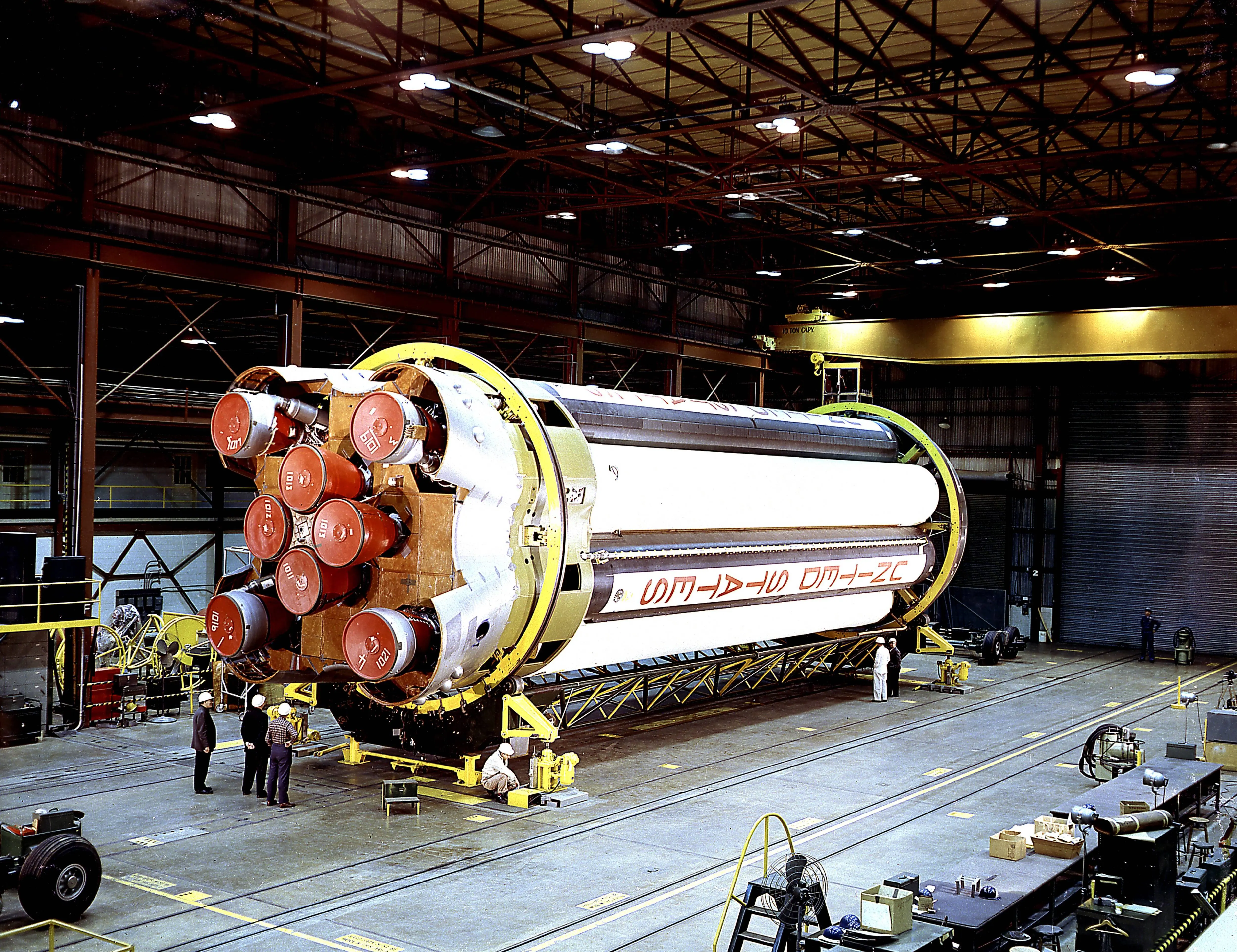How NASA’s bold first step launched today in 1961 marked the start of the rocket era that led to the Moon
-
 NASA engineers preparing the Saturn I S-I stage rockets in Building 4705 at Marshall Space Flight Center, Huntsville, Alabama, 1961. Image courtesy National Aeronautics and Space Administration (NASA). (Image via Getty)
NASA engineers preparing the Saturn I S-I stage rockets in Building 4705 at Marshall Space Flight Center, Huntsville, Alabama, 1961. Image courtesy National Aeronautics and Space Administration (NASA). (Image via Getty)On October 27, 1961, NASA conducted the first test flight of the Saturn I space launch vehicle, marking the initial step in a series of developments that eventually enabled crewed missions to the Moon.
The Saturn I was the United States’ first heavy-lift rocket designed to carry large payloads beyond low Earth orbit. According to Space.com, the launch successfully demonstrated the rocket’s capabilities, reaching an altitude of 85 miles before splashing down in the Atlantic Ocean 15 minutes later.
This flight began the operational history of the Saturn family, which includes the Saturn V used in the Apollo program. The launch confirmed that the United States possessed the technological means to develop rockets capable of supporting Moon missions.
NASA’s 1961 Saturn I launch: The beginning of America’s Moon-bound rocket era
Design and construction of Saturn I
The Saturn I rocket was developed by NASA with significant contributions from Wernher von Braun’s team, beginning in 1957.
According to Astronomy, the rocket consisted of a central liquid oxygen tank surrounded by four kerosene tanks and four additional liquid oxygen tanks.
The first stage used eight H-1 engines, with elements adapted from the Redstone, Jupiter, and Thor rockets. Hardware reuse contributed to cost savings during construction.
The George C. Marshall Space Flight Center in Huntsville, Alabama, oversaw assembly and testing, with booster stages and engines undergoing trials in April 1961.
Launch Complex 34 at Cape Canaveral, Florida, was constructed to support the rocket, reaching a height of 162 feet (50 meters) and a total mass of 460 tons prior to launch.
First flight and performance
The first Saturn I flight was held at Cape Canaveral on October 27, 1961. Space.com reports that the flight went smoothly for the most part, but the engines were shut down a little over a second earlier than expected due to too much liquid oxygen being present relative to the rest of the propellant.
The rocket nevertheless reached 85 miles (137 kilometers) of altitude and ended its flight with a splashdown in the Atlantic Ocean after 15 minutes. The successful launch served as proof of the rocket’s engineering and was the basis for further Saturn flights.
NASA informs that the Saturn rockets, among which were the Saturn V vehicles used for astronauts during the Apollo program, had a total of 32 missions, and they all were successful, thus keeping the record of 100 percent mission success.
Technical specifications and legacy
The Saturn I Block 1 test vehicle used in 1961 combined existing missile hardware to reduce development costs. According to the National Air and Space Museum, the first stage consisted of a lengthened Jupiter missile tank at the center with eight modified Redstone missile tanks surrounding it.
The second and third stages in the Block 1 configuration were dummy stages. Block 2 later incorporated a live upper stage and fins on the first stage.
The Saturn I measured 1984 inches in length and 257 inches in diameter, with a launch mass of approximately 927,000 pounds (420,484 kilograms).
Materials included thin-gauge aluminum for the body, stainless steel and other metals for the engines, and rubber insulation around certain engines.
This configuration provided a basis for the development of the Saturn V, which ultimately enabled crewed lunar landings under Project Apollo.
The October 27, 1961, launch of Saturn I initiated a sequence of developments in heavy-lift rocketry that culminated in human missions to the Moon, establishing the technical framework for the Apollo program.
Stay tuned for more updates.
TOPICS: Saturn I, Moon, NASA, Project Apollo